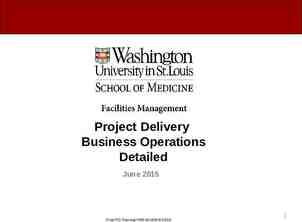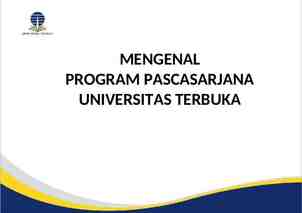Clinical Governance Dr. Hamda Qotba, B.Med.Sc; MD; ABCM; MFPH
26 Slides735.00 KB

Clinical Governance Dr. Hamda Qotba, B.Med.Sc; MD; ABCM; MFPH

?What is clinical governance ‘a system through which all of the organizations in the health system are accountable for continuously improving the quality of their clinical services and ensuring high standards of patient care by creating a facilitative environment in which excellence will flourish ‘

“clinical governance is a way of making sure that everyone who passes through health system is well cared for” or System that enable staff to work in the best possible way Staff performing to the highest possible standards

What might that mean in practice Put patients /clients/customers first and last Improve standards of working Learn from experience Enable staff and team Use information effectively

The following components have been identified as necessary Clear national standards Mechanisms for ensuring local delivery of these standards Mechanisms for monitoring the delivery of these standards

Monitor standards Apply standards Identify standards Clinical audit Manpower planning Evidence-based medicine National inquiries Continuing professional development and lifelong learning Clinical standard Complaints Monitoring and evaluation job plan Risk management Whistle-blowing Research and development

key components 1. 2. 3. 4. 5. 6. 7. 8. Clinical audit (individual and service ) National confidential inquiries Evidence-based medicine (? Apply to practice ) Clinical standards (NSFs, NICE, local ) Manpower planning (including retention ) Continuing professional development and lifelong learning Research and development ( including evaluation of care ) Clinical care quality integrated with organizational quality

Other components Clinical risk ( self and program (s)) Complaints Job plan and individual performance Critical appraisal Whistle-blowing

EB M D P C t n i a pl m s o c D & R i ia l t en id f n co ty l a ic d il n dar s C n F a st NS s l a ic il n dit C u A e w o p an r ing M n n a pl Job p k ent s Ri gem itorin n o M g& tio a u l a Ev n a an M National confidential inquiries lan B W n it o za ty i an ali g u r O Q

1. Clinical audit An audit is an examination or review that assesses and reports on the extent to which a condition, process or performance matches predetermined standards or criteria. It is concerned with resource allocation, financial and general administrative management and, to a certain extent, .substantive issues Considered as tool not goal

2. Evidence-based medicine The process of systematically finding, appraising, and using contemporaneous research findings as the basis for clinical decisions Being health professional you should aim to do only those medical activity that you have evidence it will work successfully

Clinical standards .3 Bounds by which all practices in a given area will be carried out, in achieving the goals and objectives for that area

Research and Development .4 This forms the basis for evidence-based medicine. The NHS Research and Development strategy was launched in 1991 to develop a knowledge-based NHS in which decisions (clinical, policy and managerial ) would have a sound base. This strategy will continue to have pivotal role in collecting new evidence, with support from the Horizon Scanning Center and the National Prescribing Center in identifying new and existing interventions.

Risk management .5 The process of minimizing risk to an organization by developing systems to identify and analyze potential hazards to prevent accidents, injuries, and other adverse occurrences, and by attempting to handle events and incidents which do occur in such a manner that their effect and cost are minimized. Effective risk management has its greatest benefits in application to insurance in order to avert or minimise financial liability.

Monitoring and Evaluation .6 Process of regularly reviewing achievements and progress towards the goals (day to day ) Process measuring the degree to which objectives and targets are fulfilled and the quality to the result are obtained Evaluation and audit requires the assessment of effectiveness and efficiency and the formulation of recommendations to promote improvement. In appraising these elements, however, audit differs from evaluation in orientation or objectives

National confidential inquiries .7 The four existing national confidential inquiries preoperative death, stillbirths and deaths in infancy, maternal deaths and suicides overseen by NICE.

8. Job plan and individual performance This will highlight areas in the job that are not being met, both presently and as the job develops.

Continuing Professional Development (CPD) .9 This is about developing a culture that encourages lifelong learning ( the learning organization ) and is an integral part of the job plan. Health organization should commit, plan and act on ‘investment in people’ if they are truly interested in delivering quality clinical care

complaints .10 Complaints will be monitored both externally and internally. There will have to be an effective local system in place to deal with complaints. Documentation will be particularly important in order to facilitate external scrutiny.

Manpower planning .11 This will establish the required staffing levels to achieve acceptable standards of care. However, this is not just about recruiting the appropriate staff, but also about retaining them.

Whistle-blowing .12 This is to be encouraged. If poorly performing work colleagues are not dealt with/reported, responsibility will be shared. This balance between collective and individual responsibility must be appreciated.

Critical appraisal .13 our ability to critically appraise the strength of the evidence available and its application should be part of our routine practice.

peer-review .14 both internal and external peer-review will be an important tool for assessing the effectiveness of the clinical governance culture and in creating a facilitative environment in which excellence can flourish

success For clinical governance to be successful, the following must be in place: Clear lines of responsibility and accountability A program of quality improvement activities Clear policies aimed at managing risk Procedures to identify and remedy poor performance.








